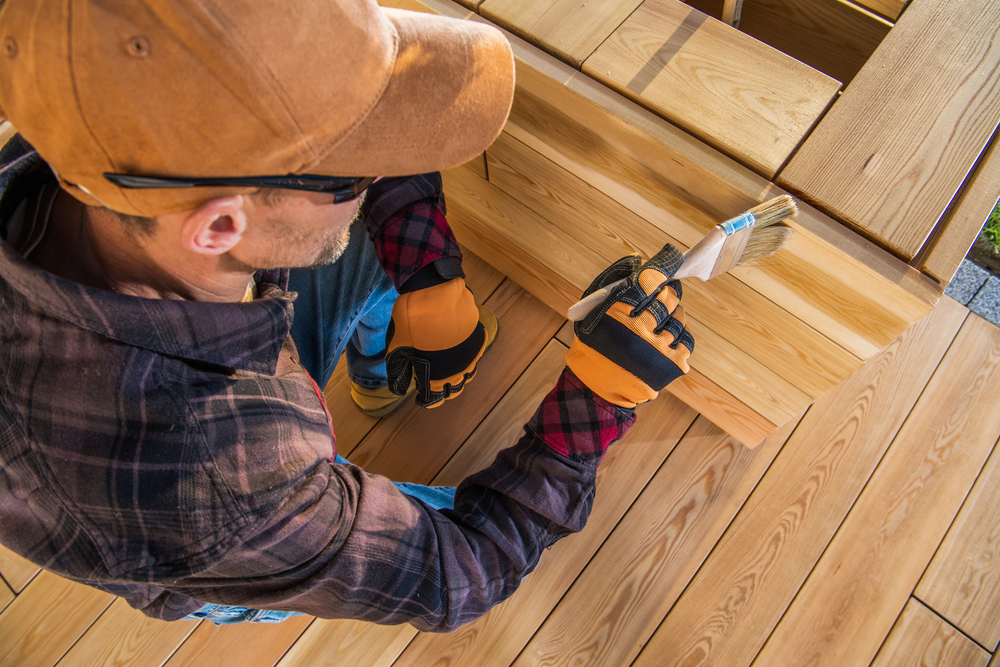Protect and enhance stunning pressure-treated wood with the best deck stains. Discover top brands, expert tips, and maintenance tricks for lasting beauty.
Stunning Pressure-Treated Wood: Best Deck Stain for Long-Lasting Beauty

Pressure-treated wood is a popular choice for decks and outdoor structures due to its durability and resistance to insects and decay. But even treated lumber can benefit from a protective stain. Staining helps to maintain the integrity and appearance of the wood by adding an extra layer of defense against moisture and sun damage. Choosing the right stain can make all the difference in preserving your deck and enhancing its appearance.
Understanding Pressure-Treated Wood
Pressure-treated wood undergoes a process where preservatives are forced into the wood under high pressure. This method greatly improves its resistance to fungal decay and insect damage. Despite being treated, the wood is still quite porous. Without a stain, the material can still absorb moisture, leading to possible warping or cracking over time. Stains help seal the wood surface, adding an aesthetic appeal while boosting longevity.
Types of Deck Stains

Picking the right deck stain starts with understanding the main types available. Each has its own advantages depending on the specific needs of your deck. Here, we’ll cover the primary categories.
- Transparent Stains: These allow the natural grain of the wood to shine through. They provide minimal coloration, just enhancing the existing tones. Ideal for newer decks with fresh, unmarred wood.
- Semitransparent Stains: Offering a balance between protection and visibility, these stains provide a bit of pigmentation. They provide good sun protection while allowing some of the wood grain to remain visible.
- Semi-solid Stains: Offering more color and more significant protection, these stains cover more of the wood grain, but still allow some texture and character to show.
- Solid Stains: These are the most opaque, providing a paint-like finish. They offer the highest level of protection against UV damage. Perfect for older decks or those needing a fresh start.
Considerations for Choosing a Stain
Choosing the best stain involves considering several factors. Start by assessing the age and condition of your deck. A newer deck might benefit from something lighter, like a semitransparent stain, to preserve its fresh look. Older or more weathered decks often require the thorough coverage of a solid stain.
Climate plays a crucial role as well. Areas with intense sunlight might require a stain with superior UV protection. Humid or rainy climates demand a stain focusing on water resistance. Check if the stain brand offers mildew resistance as this can be valuable in varied climates.
Application method and frequency of maintenance are also significant. Some stains are easier to apply and last longer, reducing the amount of work you’ll do over time. Warranties and reviews from other users can provide further insights into performance.
Popular Brands and Products
Numerous brands offer high-quality deck stains that cater to pressure-treated wood. Here’s a look at some reliable options:
- Thompson’s WaterSeal: Known for its water-based formulas, Thompson’s has a range of transparent, semitransparent, and solid stains. Their products are valued for ease of application and balanced protection.
- DEFY Extreme Wood Stain: This environmentally friendly, water-based stain is a favorite for UV resistance and its durability. The formula contains special nano-pigments that reflect the sun’s rays, extending the lifespan of the wood.
- Behr Premium Stain: Behr offers a comprehensive suite of options, including semitransparent and solid stains. Their Advanced DeckOver product is especially popular for reviving older decks with added slip resistance.
- TWP (Total Wood Preservative): Favored for its oil-based formulations, TWP stains excel in penetration, providing deep protection from weather and UV damage. Known for preventing wood rot and preserving flexibility.
Application Tips
The effectiveness of a stain goes beyond just picking the right kind. Properly applying the stain ensures it performs to its fullest potential. Here’s a guide to doing it right:
- Preparation: Clean the deck thoroughly. Use a quality wood cleaner to remove dirt, oil, and grime. Let the wood dry completely, often for at least 48 hours. This will ensure the stain adheres properly.
- Equipment: Select appropriate tools such as brushes, rollers, or sprayers based on the stain type and your comfort level.
- Weather Conditions: Stain during mild weather conditions—avoid applying in direct sunlight, rain, or extreme temperatures. Ideal conditions are between 50°F and 80°F with mild humidity.
- Application Technique: Apply evenly across the grain to avoid overlaps. Work in small sections to ensure complete coverage. Apply a thin coat, as thicker coats may peel.
- Drying Time: Allow ample drying time before using the deck—usually 24 to 48 hours. This ensures the stain cures completely and sets correctly.
Maintenance and Longevity
Maintaining a stained deck involves periodic cleaning and re-application of the stain as needed. The frequency depends on the type of stain used, climate, and foot traffic. Semitransparent stains might need re-application every 2-3 years, while solid stains could last a bit longer.
Regularly inspect your deck for signs of wear, such as faded areas or water not beading on the surface. These can be indicators that it’s time for a clean and re-stain. Keeping fallen leaves and debris off the deck can prevent mildew and fading, prolonging the life of the stain and wood beneath.
By understanding the essentials and committing to a schedule, you can maintain the beauty and function of your pressure-treated wood deck for many years.




Subscribe for Updates
Get the latest articles delivered to your inbox.
We respect your privacy. Unsubscribe anytime.